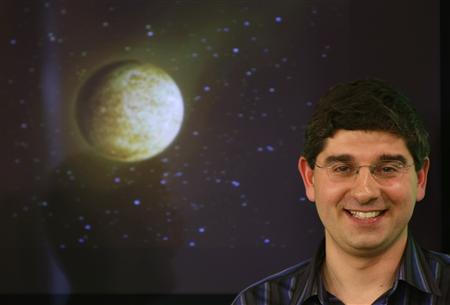We're getting closer to finding an Earth-like planet out there in the universe. Spanish astronomers announced the discovery of the smallest exo-planet found to date, located 30 light years from earth. "I think we are very close, just a few years away, from detecting a planet like Earth," team leader Ignasi Ribas said at a news conference on Wednesday April 9, 2008. The newest planet, "GJ 436T" was discovered by a team led by Ribas through its gravitational pull on other planets already discovered around the same star in the constellation of Leo.
The planet has a mass five times the size of Earth, which makes it the smallest extrasolar planet among the roughly 300 identified so far, Ribas said. The astronomers believe the planet could possibly be a rocky, Earth-like planet because of its size. Most of the planets found so far are gas giants like Jupiter.
But Ribas said the new planet is uninhabitable due to the close distance that it orbits its star, which is far less than that between the earth and the sun. Planet GJ 436 orbits close to its small, relatively cool star once every 5.2 Earth days and rotates every 4.2 Earth days.
This latest planet was found by analyzing distortions in the orbit of another, larger planet around the star GJ 436, a technique similar to that used more than 100 years ago to discover Neptune.
"Planets with a mass similar to Earth situated at a distance from their star which allows liquid water on the surface, in other words, a habitable planet, we're probably a bit further from (discovering those), but we surely will in a decade," said Ribas of Spain's CSIC scientific research institute.
Original News Source:
Reuters
 Universe Today
Universe Today
